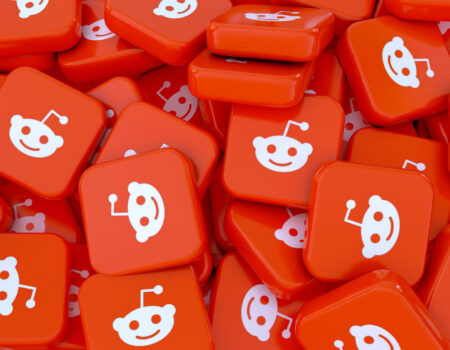Demand Generation Explained (Without the Jargon)
If you’ve ever asked marketers to define “demand generation,” you’ve probably noticed something funny—nobody seems to agree on what it actually means.
After helping dozens of companies with their strategies, here’s how I explain it: Demand gen is simply about making people genuinely interested in what you offer, without the hard sell.
Why does this matter now?
Because today’s buyers are overwhelmed. They’re bombarded with ads everywhere—LinkedIn, email, even their favorite podcasts. Demand generation cuts through that noise by being genuinely helpful first.
Take HubSpot’s approach. They could’ve just promoted their paid CRM. Instead, they built free tools like their Website Grader—useful resources that solve real problems. When users eventually need a more robust solution, guess who they think of first? That’s demand generation at work.
What most people get wrong
They confuse demand gen with lead generation. The difference?
- Lead gen is like collecting business cards at a networking event.
- Demand gen is making sure people actually want to talk to you at that event because you’re known as the helpful expert.
Some of the best examples:
✅ Drift – Chatbots that answer questions instantly instead of making people fill out forms
✅ Gong – Research reports that share valuable insights before mentioning their product
✅ Notion – A template library where users share solutions that naturally showcase the platform
The Secret Sauce? Play the Long Game.

✔ Creating an educational webinar series
✔ Building a community around shared challenges
✔ Developing free tools that demonstrate expertise
And here’s the surprising part—this approach often costs less than constant advertising. Instead of paying for clicks, you’re building assets that keep working for you. A single great guide can attract visitors for years.
What Doesn’t Work? The “Create Demand” Mindset.
You can’t force people to want something. True demand generation identifies existing needs and shows how you can help—just like how accounting software companies create content about tax season tips.
The Bottom Line
In a world where people skip ads and block pop-ups, demand generation works because it respects the buyer’s journey.
It’s not about tricking people into wanting your solution—it’s about being there with the right help at the right time.
Real-World Demand Generation Strategies
📌 HubSpot’s Inbound Marketing Magic
HubSpot redefined demand generation by pioneering inbound marketing. Instead of pushing ads, they focused on educating their audience through high-quality blogs, guides, webinars, and free tools.
🔹 The Strategy:
- They offer free tools like the CRM, Website Grader, and AI Search Grader—useful resources that help businesses optimize their marketing efforts without asking for anything in return.
- These tools solve real problems for users, so when they’re ready for a full CRM solution, HubSpot is already their trusted choice.
- Their educational content ensures that when someone searches for marketing or sales strategies, they find HubSpot’s insights first.
🔹 Why It Works:
- Buyers get real value upfront, building trust before any sales pitch.
- Free tools keep prospects engaged, bringing them back when they’re ready to buy.
- No pressure—just help first, sell later.
🔹 A Parallel Example:
Think of Spotify’s 2024 Wrapped campaign—it created massive buzz with personalized playlists and insights, subtly nudging users toward premium plans without a direct sales push. That’s demand generation done right—make the product so useful that buying feels like a natural next step.
📌 Drift’s Chat-First Game Plan
Drift disrupted B2B marketing by eliminating traditional lead forms. Instead, they introduced real-time AI-powered chatbots that answer questions instantly, removing friction from the buying process.
🔹 The Strategy:
- Drift replaced long lead capture forms with instant conversations—a move that resonated with modern buyers who expect immediate responses.
- Their book, Conversational Marketing, reinforced their authority as thought leaders, making Drift the go-to brand for AI-driven engagement.
- Drift’s AI chatbots engage prospects naturally, making sales feel effortless rather than forced.
🔹 Why It Works:
- Buyers get the answers they need instantly, improving their experience.
- Conversations feel natural, not like being shoved into a sales funnel.
- Establishes brand credibility through thought leadership and real-time support.
🔹 A Parallel Example:
Slack’s 2023 “Work Smarter” webinars followed a similar path—interactive, engaging, and ungated. These webinars drew huge crowds without requiring sign-ups, quietly increasing demand for Slack’s premium tools.
📌 Gong’s Data-Powered Pull
Gong doesn’t chase leads—it attracts them with data. Their demand generation revolves around original research, insightful reports, and high-value LinkedIn content.
🔹 The Strategy:
- Instead of running sales-heavy ads, Gong creates valuable industry reports like the State of Revenue Growth—filled with unique insights sales leaders can’t ignore.
- Their LinkedIn content is packed with data-driven takeaways that educate first, subtly pulling in prospects over time.
- By positioning themselves as industry experts, Gong doesn’t have to push their product—buyers come to them.
🔹 Why It Works:
- Authority-building first, sales later. Readers trust Gong’s insights, making them a natural choice when looking for sales intelligence solutions.
- Their reports attract the right audience—decision-makers who rely on data.
- No hard sell—just valuable insights that make Gong the go-to source for revenue intelligence.
📌 Notion’s Community Buzz Engine
.
Notion turned demand generation into a community-driven movement. Instead of traditional marketing, they let users promote their product through shared templates and organic advocacy.
🔹 The Strategy:
- Notion offers a freemium model, where users can experience the product with no commitment.
- Their community creates and shares custom templates, spreading awareness organically.
- They empower users to showcase Notion’s capabilities—word-of-mouth marketing at scale.
🔹 Why It Works:
- Users become the marketers, creating a viral effect.
- The freemium model lets teams adopt Notion naturally, leading to organic team-wide upgrades.
- Feels authentic and community-driven, rather than a corporate sales push.
🔹 A Parallel Example:
This is word-of-mouth on steroids, much like how Figma grew by enabling designers to collaborate and share their work, leading to enterprise-wide adoption.
Why This Isn’t Lead Generation
Simple:
- Demand generation educates with zero strings attached.
- Lead generation hunts for emails and shoves people into sales funnels—often way too soon.
Why Most Lead Generation Strategies Flop Hard
And it’s no mystery why. They’re clogged with old tricks, misaligned incentives, and a complete misunderstanding of how B2B buyers actually make decisions.
Here’s the full scoop, broken down into six biting truths:
1️⃣ Out of Tune with Buyers’ Flow
B2B buyers aren’t following a straight-line path to purchase anymore—and they haven’t for a while. The old-school lead-gen model assumes that if you capture a prospect’s email, they’re ready to be sold to. Reality check: They’re not.
🚨 Today’s buyers are self-sufficient. They do extensive research, read reviews, compare options, and consult industry peers before ever engaging with a sales team. By the time they reach out, they’ve likely already made up their mind.
📌 Gartner spills it—B2B buyers only spend 17% of their buying journey actually talking to sales. If they’re considering multiple vendors, that time gets split even further. Yet, many lead-gen strategies still assume a quick sales call will close the deal.
📌 Microsoft’s 2024 fumble proves it—they went all-in on aggressive cold outreach and mass email blasts, expecting immediate conversions. The result? Record-low open rates, high unsubscribes, and disengaged prospects. Meanwhile, their competitors took a different route:
LinkedIn thought leadership posts providing real industry insights.
- No-pressure webinar series focused on education, not pitching.
- Soft-touch retargeting ads that kept them on buyers’ radars without overwhelming them.
📌 Take a page from Slack. Instead of spamming inboxes with demo requests, they let the product sell itself. Their free team collaboration tools naturally pull users in, giving them real value before asking for anything in return. By the time teams need more features, upgrading feels like a no-brainer.
📌 HubSpot also nailed this approach. Rather than pushing direct sales, they offer free tools like Website Grader that provide instant, useful feedback to prospects. This creates an early positive experience with their brand, making them the go-to choice when businesses actually need a CRM.
2️⃣ Flood of Dud Leads
Marketing teams are obsessed with high lead counts—but sales teams know the truth: Most leads are a waste of time.
📌 Stats don’t lie:
- Only 27% of B2B leads are actually sales-qualified. (Forrester)
- 79% of marketing leads never convert into sales. (HubSpot)
📌 The real problem?
- Marketing focuses on capturing leads at any cost (think gated content, trade show lists, webinar signups).
- Sales wastes days chasing unqualified prospects who aren’t ready to buy, leading to burnout and missed revenue.
🔹 The Fix?
Ditch the “lead volume” obsession. Prioritize lead quality with clear qualification criteria—like intent data, deeper engagement signals, and actual pain points.
3️⃣ Sales-Marketing Clash
It’s the old war:
🗣 Marketing: “Sales keeps ignoring our leads!”
📞 Sales: “Marketing’s leads are junk!”
The result? A broken pipeline, wasted budget, and blame games.
📌 Case in point:
- A 2023 study found that misalignment between sales and marketing costs companies 10%+ in lost revenue every year.
- Sales reps spend 50% of their time on unproductive prospecting—often because marketing is passing them low-intent leads.
🔹 The Fix?
Marketing needs clearer alignment with sales on:
✅ What defines a qualified lead? (Beyond just downloading an ebook)
✅ How is intent measured? (Actual engagement, not just website visits)
✅ What messaging works best for conversion? (Sales should share real buyer insights!)
Companies that tighten this collaboration see better close rates and higher ROI.
4️⃣ Brand Burn from Pushy Moves
Buyers want control over their own journey—but bad lead-gen tactics snatch that away.
📌 What NOT to do:
❌ A buyer downloads a free whitepaper → 10 minutes later, a sales rep calls.
❌ A prospect attends a webinar → Instantly bombarded with emails pressuring them to book a demo.
❌ They visit a pricing page → Now their inbox is drowning in “We noticed you checking out our pricing!” emails.
📌 What happens next?
- The buyer gets annoyed.
- They associate your brand with pushy tactics.
- By the time they ARE ready to buy, they avoid you.
🔹 The Fix?
- Give them space. Let them engage with your brand on their terms.
- Use soft nurture tactics. Provide helpful insights without expecting an immediate sale.
- Let them raise their hand when ready. If someone keeps engaging (visits pricing, requests a tool, attends multiple events), THEN it’s time for outreach.
5️⃣ Gating Traps, Not Buyers
Many lead-gen strategies rely on gating everything—but collecting emails doesn’t mean people want to buy.
📌 What happens when every webinar, guide, and case study is gated?
- Buyers get frustrated.
- They use fake emails just to get access.
- Your “leads” never engage again after downloading.
📌 A smarter approach?
- HubSpot’s Website Grader: No gate, just pure value—yet it brings in qualified prospects who trust them.
- Gong’s research reports: Free access builds thought leadership and gets buyers invested in their insights.
🔹 The Fix?
- Give away high-value content for free. It builds credibility and long-term trust.
- Gate only strategic assets. If they’ve already engaged, THEN ask for their email.
- Use soft conversion points. Instead of forcing a form, offer a free consultation, interactive tool, or event invite.
6️⃣ Lead Scoring Roulette
Lead scoring should be a powerful tool—but most companies use it wrong.
📌 Common mistakes:
❌ Relying on surface-level signals. (Example: Someone visits a pricing page once—does that really mean they’re ready to buy?)
❌ Assigning too much weight to downloads. (People collect resources for research, not immediate purchase.)
❌ Ignoring real engagement signals. (Like return visits, repeated tool use, or social interactions.)
📌 Adobe’s 2023 fix:
They shifted from basic lead scoring to deeper engagement-based tracking—resulting in a 20% conversion bump.
🔹 The Fix?
✔ Go beyond page views. Look at repeated engagement across multiple channels.
✔ Track actual intent signals. Like in-depth product research, discussion in industry forums, or comparing solutions.
✔ Use AI-driven scoring. Modern tools (like HubSpot, 6sense, and Clearbit) can predict real buying intent based on behavioral patterns.
The Bottom Line
❌ Old-school lead-gen pushes too hard, too soon.
❌ It focuses on numbers over quality.
❌ It damages brand reputation.
✅ Demand generation flips the script—offering value first, nurturing trust, and letting buyers come to you when they’re ready.
So ask yourself: Are you chasing leads or actually building demand?
Partner with our Digital Marketing Agency
Ask Engage Coders to create a comprehensive and inclusive digital marketing plan that takes your business to new heights.
Contact Us
The Fix? Smarter Tools.
If lead generation’s kicking your butt, HubSpot’s tools can save the day.
✅ Analytics and reporting cut through the noise
✅ Pinpoint which pages, ads, or offers actually deliver
The game has changed—are you playing it right?








